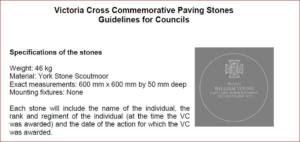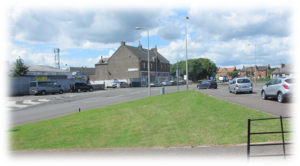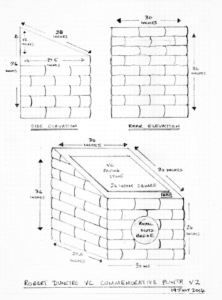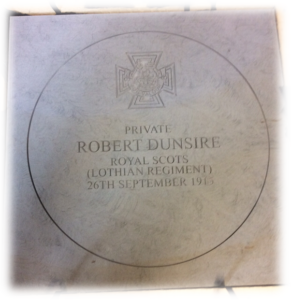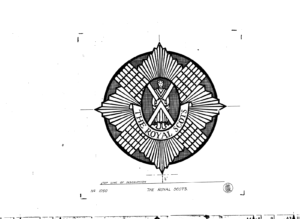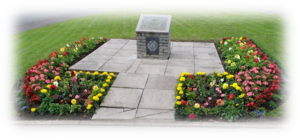In August 2013, the UK Government Department for Communities and Local Government announced a World War I Centenary Design Competition, to design a Commemorative Paving Stone for troops who had been awarded the Victoria Cross, Britain’s highest military honour. The plan was that, over the next four years on the date corresponding to the VC recipient’s act of valour, commemorative paving stones would be laid in their place of birth, or where they lived following the war. As a result, 469 stones were laid in communities across England, Wales, Scotland and Northern Ireland. The programme also saw 35 VC recipients commemorated in the Republic of Ireland, with 145 Stones laid at the National Memorial Arboretum to commemorate those born overseas. The first stones were laid on 23 August 2014 and the last in November 2018.
The specification for every VC Paving Stone that was to be supplied centrally was as follows:
The guidance for Councils left the stones’ siting to their discretion, but with a strong message that ‘the stones should be part of the community and sited in a position where they will be visible to members of the public’. Councils had discretion about any event that they chose to organise for the unveiling of the stones, but it was expected that any event should be respectful and reflective, as well as inclusive, to bring this aspect of shared history to a wider audience. It was suggested that local community groups, relatives, current and former members of the armed forces, young people and local dignitaries should be involved.
The site chosen for Robert Anderson Dunsire VC’s Commemorative Paving Stone was Toll Park, Muiredge, Buckhaven, Fife. The site was directly opposite Station Road, Buckhaven where Robert was born on 26 November 1891.
Site at Toll Park, Buckhaven with Station Road to the Left
It was agreed that the paving stone should rest on a raised plinth in this corner of Toll Park which I have quietly designated as ‘Dunsire Corner’. The plinth design by Bert Hannah and his wife was to be in keeping with Robert’s character – understated, robust with clarity of purpose.
Robert’s Paving Stone arrived and was unpacked 3 weeks before the planned unveiling and ceremonies on 26 September 1915.
The plinth was built by a team organised by Fife’s Community Works Programme.
The regimental badge of The Royal Scots on the front of the plinth was made by the long-established company of John Y Thomson, Monumental Sculptors, Bridge Street. Leven. The specification of the badge was provided by The Commonwealth Graves Commission so that it was consistent with the badge on Robert’s headstone at Mazingarbe Communal Cemetery.
Steve Lee, who runs the Web Site ‘Memorials to Valour’ followed all UK VC Commemorations, commented in an e-mail to me that the Robert Dunsire VC’s Memorial was one of the best he had seen. I met members of Steve’s team in France in the days immediately after the unveiling of Robert Dunsire’s Commemorative VC Paving Stone. I think this feedback is a major pat on the back for the work of Fife Council’s Community Works Programme team and everyone involved in the project to create a permanent memorial to Robert Dunsire VC in the town of his birth.
The site at Toll Park still receives excellent attention and respect from the Fife Council Parks Team as this photograph from 2019 illustrates.
Dunsire Corner at Toll Park transformed
